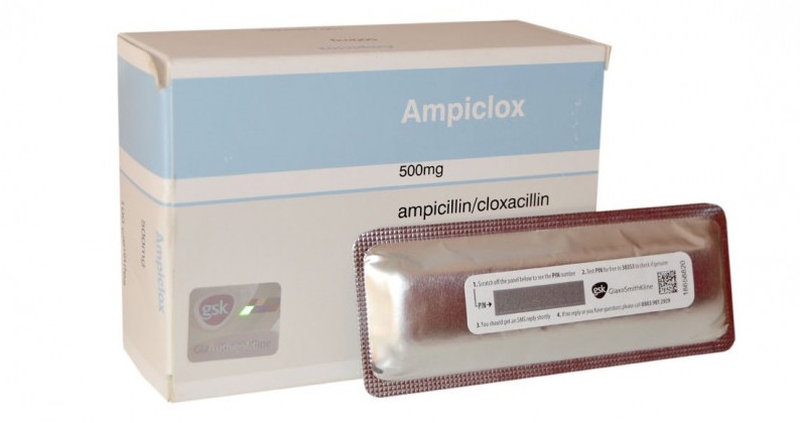You have to use an antibiotic to clear the infection-causing bacteria, and Ampiclox is one of many antibiotics available today. It belongs to a group of drugs called penicillin and has the combination of two medicines cloxacillin and ampicillin. Your doctor may use Ampiclox to treat many different conditions. It is, however, a good idea to get familiar with Ampiclox dosage requirements and certain pros and cons of taking these injections.

Part 1: What Is Ampiclox Used For?
It is quite useful in treating both upper and lower respiratory tract infections, such as bronchitis, Otitis tonsillitis, and nose infections caused by different bacteria, including strpto-cocci, staphylococci, H. influenza, and diplococcus pneumonia.
It proves beneficial in the treatment of gastrointestinal infections, including typhoid, enteritis, and paratyphoid caused usually by salmonella, sheigella, entero-cocci, proteus mirabilis, and Escherichia coli.
It is an effective treatment option for patients suffering from a urogenital tract infection, such as cystitis, urethritis, prostatitis, and pyelonephritis caused by Escherichia coli, neisseria gonorrhea, and proteus miabilis.
It is equally effective in treating skin and soft tissue infections, such as abscesses, furunculosis, skin ulcerations, and cellulitis caused by staphylococci.
It works quite effectively in treating bone, joint infections caused by neisseria meningitides and staphylococci.
It works well in treating abscess after minor surgery such as tooth extraction, tonsillectomy, etc.
Part 2: Common Types of Ampiclox
Ampiclox Syrup 250Mg 100ML
How It Helps: Available in powdered form, it contains Cloxacillin and Ampicillin trihydrate B.P. It proves extremely beneficial against infections caused by a combination of different organisms. It is also a suitable choice to treat an infection that includes penicillin-resistant staphylococci.
How to Use: Children up to 2 years of age should consume 250mg every 6 hours, whereas children between 2 and 10 years of age should consume up to 500mg every 6 hours.
Ampiclox Neonatal Drops 8ML
How It Helps: It's available in a powdered form that can be used to prepare neonatal drops. It helps treat different infections and is quite effective in treating an infection where penicillin-resistant staphylococci are present.
How to Use: Each bottle comes with a pipette and you need to take it every 4 hours.
Ampiclox Capsules 500MG
How It Helps: Used for the treatment of bacterial infections, it is quite effective in the treatment of bronchitis, lung abscess, pneumonia, and infections associated with cystic fibrosis. It has produced great results for patients suffering from tonsillitis, sinusitis and pelvic infections such as salpingitis, septic abortion, and caesarian section prophylaxis.
How to Use: Adults and children who are above 10 years of age should take a capsule every 6 hours, but your doctor may advise otherwise considering the severity of your infection.
Part 3: Side Effects of Ampiclox
Common Skin Reactions
Some of the most common and less severe skin reactions may occur:
A mild itchy rash may appear on your skin.
You may notice hive-like swollen areas on your legs, forearms, hands, palms, or feet.
You may feel sick and nauseous while using this antibiotic.
Rare Side Effects
You will experience rare side effects if you're using the medicine for several weeks. Some allergic reactions can be observed such as swelling of the lips, face, and body; skin itching and rash; or breathing difficulties.
It may cause inflammation of blood vessel walls that will cause flat red spots to appear under your skin surface.
You may experience a delayed allergic reaction with signs such as fever, rashes, enlargement of lymph nodes, and joint pains.
Erythema multiforme, a rare but possible side effect of Ampiclox Beecham, which will make itchy reddish patches to appear on your skin, especially on the soles of your feet and palms of your hands.
You may notice skin reactions after using Ampiclox. This will cause your skin color to change and bumps to appear under your skin. You may also notice pustules and blisters with itching, pain, and scaling.
The inflammation of the large bowel is yet another rare side effect of this antibiotic.
You may even have to deal with serious liver side effects. Call your doctor if you get blisters under your skin, severe diarrhea with bleeding, yellowish skin, and darker urinate with pale stools.
Part 4: Things You Should Know Before Taking Ampiclox
Drug Interactions
Like other antibiotics, Ampiclox may interact with other medicines. You may end up having an allergic reaction if you take Ampiclox when you are already taking allopurinol for your gout. In case you are taking probenecid, your doctor will adjust your dose of Ampiclox to avoid complications. You may also have to adjust your Ampiclox dosage if you're already taking methotrexate for conditions like psoriasis, rheumatoid arthritis, or cancer. Also, keep in mind that the use of Ampiclox will reduce the effectiveness of contraceptive pill.
When to Avoid Taking
It is important to pay attention to when to avoid certain things before you start using this medicine:
If antibiotics cause any reaction, including swelling and skin rash
If you're receiving treatment for liver or kidney problems
If you have glandular fever
If you are using a diet that restricts your sodium intake
If your child has jaundice
It is important to talk to your doctor if you're planning to become pregnant, are already pregnant, or are breast-feeding your baby before you start using Ampiclox.

View All Comments /Add Comment